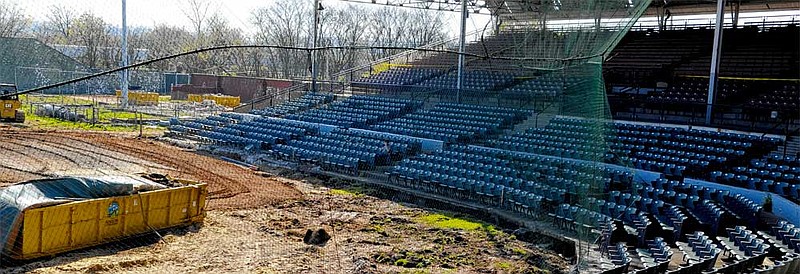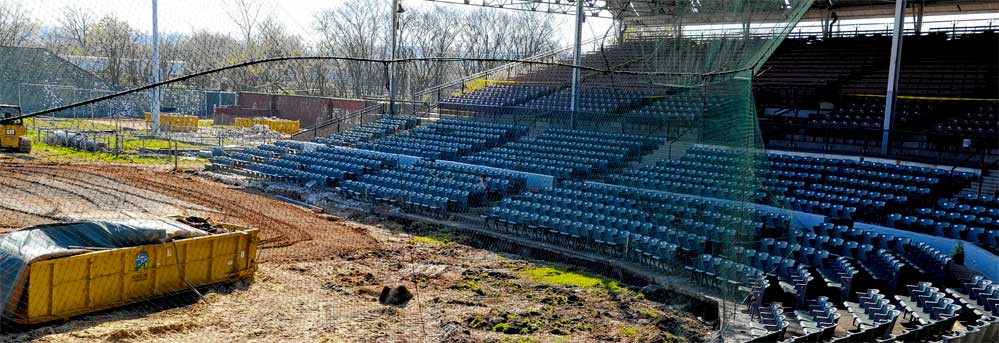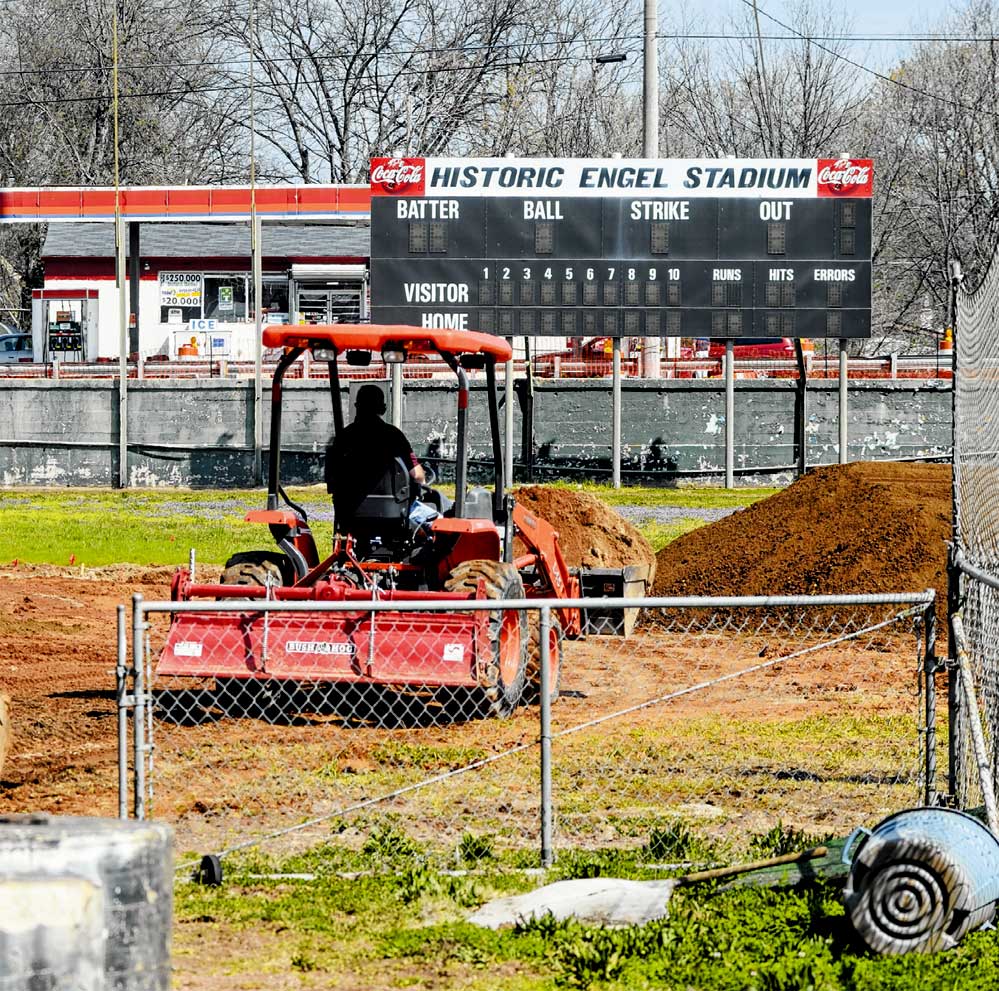Getting Engel Stadium ready for "42" wasn't just a case of signing contracts and opening the gates to the film crew. Repairs and renovations - lots of repairs and renovations - had to be made before it could be used.
The Chattanooga City Council and Chattanooga Area Convention and Visitors Bureau each donated $25,000 while the Cornerstones historic preservation group kicked in $20,000 to help pay for repairs to Engel, including to the grandstand roof, which was declared unsafe in 2011.
And before any other work could start, lead-based paint had to be removed from outfield walls and wooden seats.
Officials with the Engel Foundation, which is in charge of maintaining the ballpark, say about $250,000 was spent to fix the roof, repair the stadium's electrical and plumbing systems, remove the lead paint and other work.
A crew of about 80 was hired by the film company to get Engel set up for moviemaking. Renovations to Engel, including dugouts removed, tunnels dug, grandstands installed and the infield moved, cost the film company about $540,000, officials say.
The stadium was going to be used as a stand-in for several 1940s-era ballparks, including the Brooklyn Dodgers' Ebbets Field, so walls made of plywood were built along the edge of Engel's outfield and down the first and third baselines, then painted green so computer-generated graphics could be added later.
The outfield wall was 640 feet long and 40 feet tall, while the baseline walls were about 240 feet long each and 32 feet tall. Every eight feet, three telephone poles were sunk about 8 feet into the ground for the walls' framework. Building the walls ate up about $300,000 of the total budget.
A three-story, 32-foot-tall scoreboard with an 8-foot-tall clock on top also was built.
Engel's dugouts - made of double-wall concrete reinforced with double layers of steel rods - had to be torn out and new dugouts built to match Ebbets Field. A tunnel - about 9 feet deep and 80 feet long - was dug under Engel to simulate the one that led from Ebbets' locker rooms to the dugout.
More digging was required to build in-ground grandstands like Ebbets', and Engel's infield was moved 50 feet forward and turned 20 degrees to match the Brooklyn field


